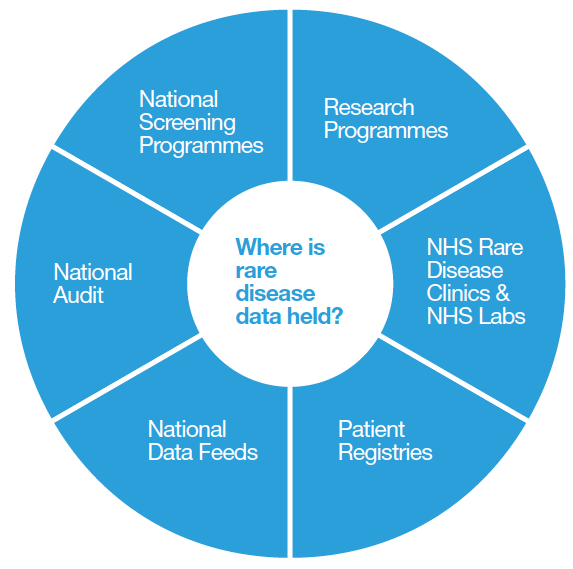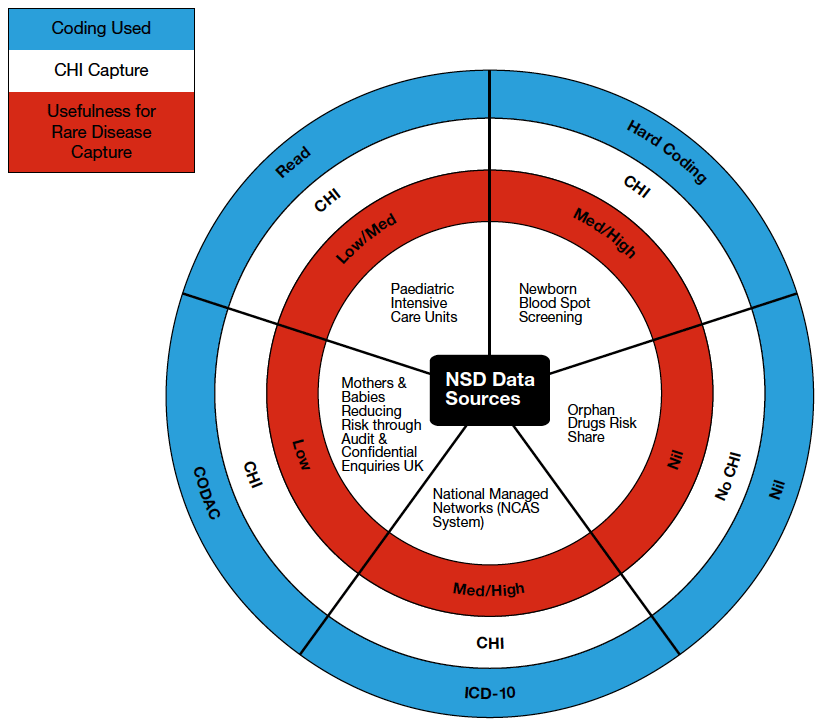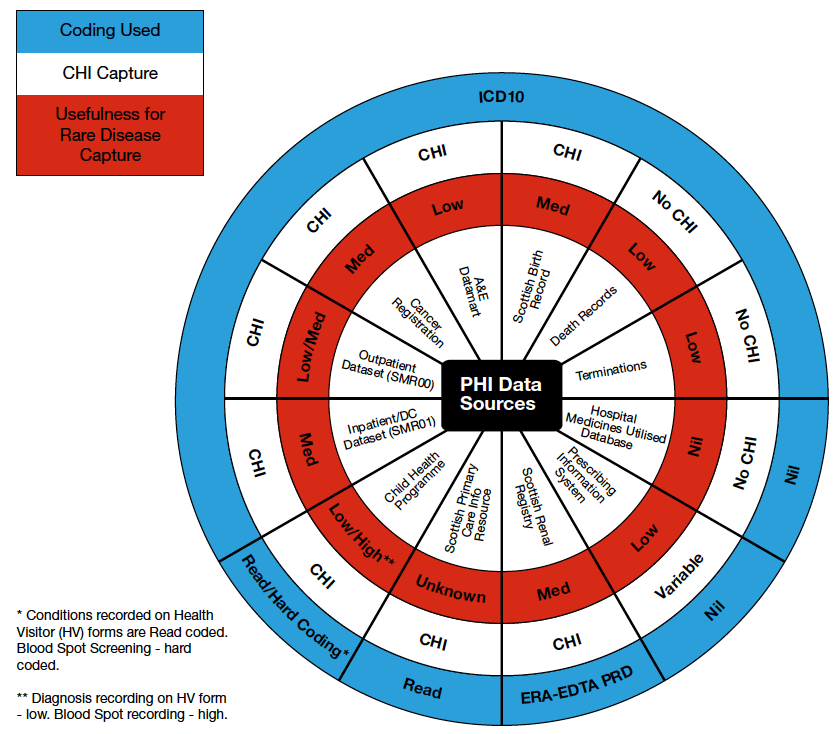Rare Disease Scotland: progress report
An update on the work carried out in Scotland against the 51 Commitments in the UK Strategy for Rare Diseases.
Annex 2: Summary Report From Rdiog Short Life Working Group On Data
What is a Rare Disease?
A rare disease is defined by the European Union as one that affects less than 5 in 10,000 of the general population. There are between 6,000 and 8,000 known rare diseases and around five new rare diseases are described in medical literature each week.
It is estimated that within the Scottish population there are up to 300,000 or 1 in 17 people who may be affected by a rare disease over their lifetime.
Issues for People with a Rare Disease
Patients with rare diseases in Scotland have experienced delays in getting a diagnosis and treatment, with several getting a number of diagnoses on the way.
It’s Not Rare to Have a Rare Disease
The Scottish Government’s implementation plan, It’s Not Rare to Have a Rare Disease - The Implementation Plan for Rare Diseases in Scotland was launched in June 2014. This plan highlights the numbers that are affected by a rare disease in Scotland, the difficulties these patients face and the need for action moving forward.
The Rare Disease Implementation Oversight Group was then created to take the Plan forward. One strand of the Group’s work has focused on data, tasked to consider how information on rare disease can be captured in Scotland to enable monitoring and reporting.
Where is Rare Disease Date Held?
Rare disease information may be captured in a number of places, including;

Congenital Anomalies
Congenital anomalies comprise a wide range of abnormalities of body structure or function that are present at birth and are of prenatal origin. Congenital anomalies account for approx 80% of all rare diseases and affect approx 2-4% of pregnancies in Scotland. There is currently no national congenital anomaly register.
Recommendations from a recent scoping exercise looking at potential data sources to identify patients with a rare disease included a recommendation to establish a congenital anomalies register in Scotland.
This register would create a user view of appropriate data held within the NSS Corporate Data Warehouse, ensuring Scotland remains in line with the congenital anomalies work undertaken in England by Public Health England.
Current Data Sources within NSS ( PHI & NSD) Which May Capture Information on Rare Diseases;
Coding Used
Currently only a small fraction of rare diseases have codes
in international nomenclatures, making it difficult to trace
patients with rare diseases in health information systems on a
national and international level. Having codes for each and every
rare disease would help obtain a better knowledge of healthcare
pathways and of their impact on specialised health care services
and on budgets.
ICD10
International Classification of Diseases 10th edition
published by the World Health Organisation and used by more than
100 countries across the world. Widely used in the
UK, especially in
secondary care. Whilst accurate, the value of
ICD10
coding for rare diseases is extremely limited as there have been
numerous changes and advancements for rare diseases since the
inception of
ICD10
in 1994. Additionally,
ICD10
is not designed to collect at a discreet enough level for rare
disease and is not good at separating out the thousands of rare
diseases and disorders that exist.
Due to the limitations of the 10th edition, the ICD 11th revision is due by 2018 and may assist in rare disease coding if adopted, however, improved rare disease coding does not only rely on a more suitable coding system but also depends on sufficient clinical, clerical and coding resources that allows detailed, accurate and consistent coding.
Read Codes
Standard clinical terminology system used in General
Practice throughout the
UK and maintained by the
UK Terminology Centre, a
division within
NHS Digital. It
supports detailed clinical encoding of multiple patient incidences.
The updating of Read codes will cease in April 2018.
Hard Coding
Suspected / Carrier recorded against the condition tested
for.
ERA-EDTA
PRD
(Coding for Primary Renal Disease)
The most recent
ERA-
EDTA coding system for Primary Renal Disease (
PRD) includes
codes and terms for most kidney diseases and not only for those
that may lead to end-stage kidney failure. This coding system has
the advantage of including the latest knowledge on kidney disease
as well as direct linkage to
ICD10
and
SNOMED
CT concept identifiers.
CODAC
Cause of Death and Associated Conditions is a tiered
approach to the classification of perinatal deaths and can provide
details of the stillbirths and neonatal deaths where the main cause
of death was attributed to a congenital anomaly (
CODAC
level 1) showing
CODAC
level 2, which provides information about the system affected by
the anomaly and
CODAC
level 3, which provides information about the specific anomaly.


Contact
There is a problem
Thanks for your feedback